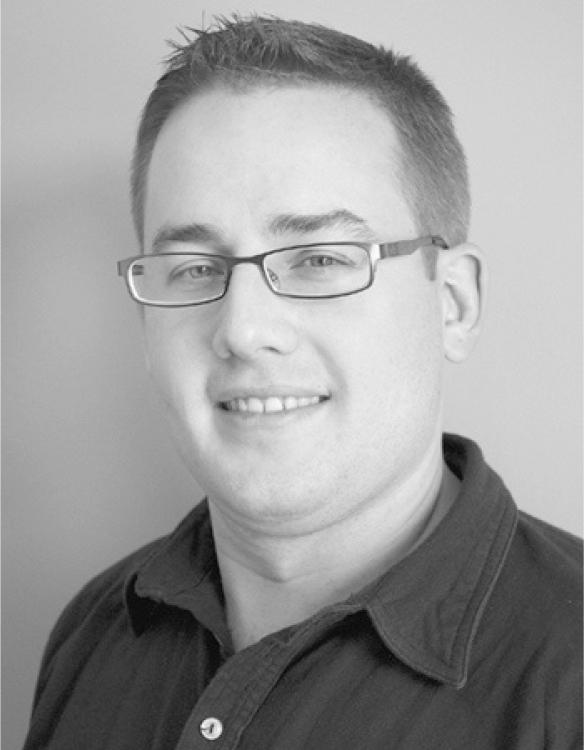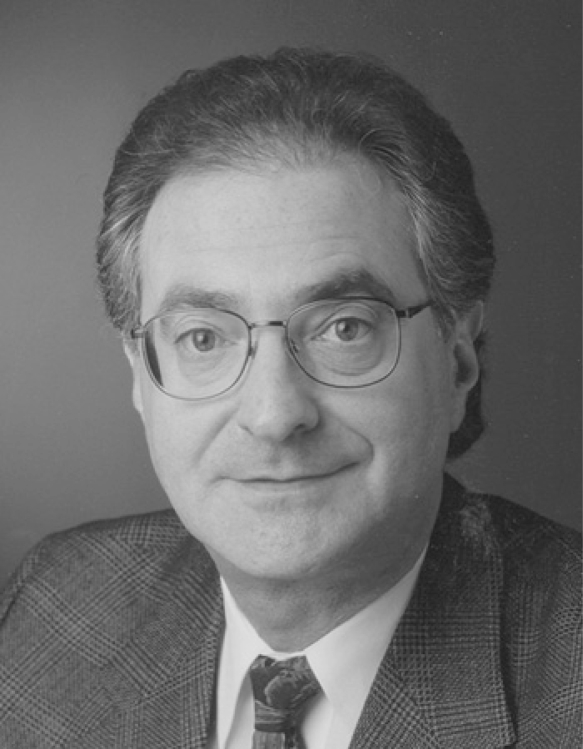Dr. Kent Stuber, BSc, DC, MSc
Dr. André Bussières, DC, FCCS(C), MSc
Dr. Allan Gotlib, BSc, DC
Introduction
Previous work on the topic of chiropractic research capacity in Canada has shown that currently less than 1% of chiropractors across the country are conducting research on a full time basis.1 That survey consisted of two parts, a first sent to the entire profession nationwide and a second sent only to those with post-graduate training or who indicated in the first part that they were currently conducting research.1 The main findings from the first part of the survey indicated that there were 94 chiropractors who either have or are in the process of completing a master’s degree, along with 30 who either possess or are completing a PhD.1 There was a noticeable discrepancy in terms of researcher distribution across the country with the vast majority being found in Ontario and Quebec and the remaining provinces and territories suffering from a considerable lack of researchers.1
The second part of the survey found that there are 20 full time chiropractic researchers and 55 part time researchers.1 Once again the vast majority of these researchers were found in Quebec and Ontario.1 Among the full time researchers 8 were conducting clinical re-search, 9 were doing epidemiological research, 6 were neurophysiologists, and there were 4 biomechanists.1 The full time researchers averaged 17.8 publications in peer-reviewed journals over the past 5 years, compared with 3. 2 papers by the part time researchers in the same time span.1 Ten of the full time researchers indicated receiving government funding for their work, 5 received institutional funding, 3 received private funding, and 4 received funding from the profession.1 By comparison 4 of the part time researchers indicated receiving government funding for their work, 12 received institutional funding, 3 received private funding, and 3 received funding from the profession.1
Key message.
Less than 1% of chiropractors in Canada are actively engaged in research
Chiropractic researchers in Canada are substantially under-funded.
Many chiropractic researchers and graduate students are solely self-funded.
Finding new ways to secure funding for chiropractic researchers is imperative.
There is an urgent need to continue to build chiropractic research capacity.
Phase 3
In this final part of our survey, we focused on the “financial aspects” of funding health research, health researchers and researchers in training positions. We attempted to quantify in a general sense the amount of funding which supports chiropractic research and researchers in Canada. This information is important for many reasons. For example:
It will allow us to better focus strategic planning over the next 5 year period to prioritize and partner strategically
It will help us continue to build capacity and create new funding opportunities
It will help us accelerate the application of knowledge
It will identify gaps in capacity, research and funding
It will help us increase the number of trainees and researchers
The purpose of this project is to quantify the funding levels and delineate the types of funding obtained by chiropractic researchers in Canada.
Methods
The sample population for the Phase III survey consisted of respondents to the Phase II survey. Known researchers and graduate students who did not reply to the earlier Phases were also included. These researchers were e-mailed a survey that asked for specific information regarding their funding. The survey was sent on five different occasions to encourage higher response rates. Professors were asked to name all federal and provincial funding agencies from which they had received financial support in 2008. Such federal agencies included the Canadian Institutes of Health Research (CIHR), Natural Sciences and Engineering Research Council (NSERC), Social Sciences and Humanities Research Council (SSHRC), Canada Foundation for Innovation (CFI), Canada Research Chairs (CRC), Health Canada or similar national/international funders such as the Cochrane Opportunities Fund. Provincial funding agencies included the Michael Smith Foundation for Health Research (MS-FHR), Ministry of Health, Workplace Safety and Insurance Board (WSIB), University, Hospital, Saskatchewan Health Research Council, Nova Scotia Health Research Foundation (NSHRF) as examples. Other relevant funding agencies, whether national or international, included charities, corporations, regulatory boards, Canadian Chiropractic Research Foundation (CCRF), Foundation for Chiropractic Education and Research (FCER), Research Institutes, etc. We asked respondents to tell us the amount and in each case if this was:
Salary Award (name of award, amount), or
Operating Grant (grant program, amount, project title, PI, Co-PI, Co-investigators)
Contractual or tenured university or hospital salary as an employee (other than a competitive salary award).
Chiropractors in research training positions were asked to include grants, scholarships, bursaries, training assistant positions, and research assistant positions in 2008. This category included graduate students/candidates and post doctoral fellows.
The information was collected and displayed as aggregate data only. All information was treated with strict confidentiality and all original materials were destroyed after relevant sanitized information was entered in the aggregate pool.
Results
The survey was sent to 90 participants, 88 of whom responded (97.8% response rate). Tables 1 and 2 depict the results of the survey. Of the 88 respondents who had formal research training, 32 (36%) indicated that they were not involved in research in 2008. Eighteen (20%) of the researchers, including 12 graduate students (1 PhD, 11 master’s level) indicated that they had no funding and that their research was therefore self-funded. The 12 graduate students without funding account for approximately 1/3 (12 of 35) of chiropractors who are currently university graduate students. Thirty-eight (43%) of the respondents indicated that they had received some funding for their research.
Table 1.
Engaged vs not engaged in research or research training in year 2008
| Clinician DC | Professor (academic appointment) | Graduate student | Post-doctoral trainee | |
|---|---|---|---|---|
| Not engaged in research or research training (have a Masters degree or PhD but not active in research in 2008) | 28 | 4 | ||
Engaged in research or research training in 2008
|
3 1 |
3 13 |
12* 23 |
0 1 |
Year 2008 (N = 90) Non-responders = 2.
One third of chiropractors who have research training were not involved in research in 2008.
One third of graduate students (one PhD, 11 masters level) had no funding (self-funded).*
Table 2.
Total salary awards and operating grants in the year 2008
| Clinician DC | Professor (academic appointment) | Graduate student | Post-doctoral trainee | |
|---|---|---|---|---|
| Engaged in research or research training AND received funding Year 2008 | 1 | 13 | 23 | 1 |
| Salary award | $5,000 | $ 699,470a | $ 131,200b $ 357,000c |
$60,000 |
| Operating Grant | $3,409,526d | $1,346,805e | ||
| PI | $2,507,518 (23) | $ 223,425 (1) | ||
| Co-PI | $ 287,231 (3) | $ 30,000 (1) | ||
| Co-Investigator | $ 614,777 (10) | $1,093,380 (6) | ||
Year 2008 (N=90) Non-responders = 2.
University/College salaries not included – 7 of the 13 Professors received competitive salary awards from Federal/Provincial funding agencies.
13 master students.
10 PhD candidates.
Number of grants = 36 Range ($17,500–$504,330).
Number of grants = 8 Range ($30,000–$506,367). (#) bracketed number indicates number of grants.
As a PI or Co-PI combined – Total grants in 2008 above $300,000 threshold.
Researcher #1 1,078,983. Researcher #2 504,330. Researcher #3 401,111. Researcher #4 322,300 (75.6% of grants held by 4 researchers).
Table 1 sets out the distributions of competitive awards received in 2008, while Table 2 sets out the actual amounts of the funding.
One clinician received $5000, while 7 of 13 academic professors received a total of $699,470 in competitive salary awards (range $21,000–$287,000). A total of 13 masters students received $131,200 while 10 PhD candidates received $357,000 in competitive stipend awards. One post-doctoral fellow received $60,000 in a competitive stipend award.
With respect to competitive operating grants, 12 of 13 academic professors held a total of $3,409,526 in 36 separate grants (range $17,500–$504,330), while 3 graduate candidates held a total of $1.346,805 in 8 separate grants (range $30,000–$506,367).
We separated the operating grant component according to whether the respondent indicated they were the principal investigator (PI), co-principal investigator (CoPI), or co-investigator. PI professors held 23 grants totalling $2,507,518 while PI graduate candidates held 1 grant totalling $223,425. Co-PI professors held 3 grants totalling $287,231 while Co-PI graduate candidates held one grant totalling $30,000. Co-Investigator professors held 10 grants totalling $614,777 while Co-Investigator graduate students held 6 grants totalling $1,093,380.
Four chiropractic researchers holding the highest total operating grants awarded to either a PI or Co-PI represented 75.6% of all PI and Co-PI awards granted.
Discussion
This preliminary survey has identified various gaps in capacity, research and funding which must be addressed in the coming years in order to advance the body of knowledge defining the profession. Too few chiropractic researchers and exceedingly low levels of research funding represent barriers to advancing the profession.
In 2008, reported chiropractic research activity in Canada was supported by approximately $4 million in competitive funding. It is noteworthy that in the same year, one of Canada’s major federal health funding agencies (CIHR) alone reported expenditures of $974.1 million (fiscal 2007–2008).
On our preliminary data, only 4 chiropractic researchers in Canada held 75.6% of the competitive operating grants as a PI or Co-PI. This finding alone warrants a strategic major investment by the profession and its partners to strengthen chiropractic health research capacity. This investment is required in order to provide governments across Canada with the high quality chiropractic evidence necessary to integrate and facilitate health care delivery by chiropractors to Canadians.
One successful strategy realized to date has been the Consortium of Chiropractic Researchers which now has some 23 members who are professors at universities across Canada. Recently the Consortium held a successful Workshop funded by CIHR and the CCRF. The researchers presented their current innovative, multi-disciplinary state of the art research developments in the chiropractic discipline to further refine the Chiropractic Research Agenda and ensure its congruency with CIHR. Such collaborative relationships foster greater networking opportunities and new research streams and develop cross disciplinary linkages. These researchers collectively pool their output to improve the health of Canadians and secure our profession’s place in both our health research system and health care system.
However, finding new ways to secure funding for chiropractic researchers is imperative. Canadians are disadvantaged by not enjoying the benefits of new chiropractic knowledge that addresses the economic burdens of health, injury, disease and disability that so many Canadians endure needlessly.
Conclusion
It is clear that focused strategies are required to continue to build capacity and create new funding opportunities structured to increase the number of chiropractic research trainees and researchers and that they be supported with appropriate levels of funding to facilitate their important work.
While still few in numbers, it appears that a core group of highly dedicated researchers with clinical training in chiropractic is ready to undertake collaborative research. Professorships and Research Chairs in major universities across the country are now being established, including the recently announced position at McGill University. With such opportunities, many more researchers and trainees are expected to consider a fulltime career in research. Future efforts of the Canadian Chiropractic Research Foundation (CCRF) will hopefully explore new funding models for chiropractic research, further refine the chiropractic agenda in Canada, foster interdisciplinary research and develop new chiropractic knowledge.
References
- 1.Stuber K, Bussieres A, Gotlib A. Chiropractic research capacity in Canada in 2008. J Can Chiro Assoc. 2009;53(2):78–86. [PMC free article] [PubMed] [Google Scholar]





